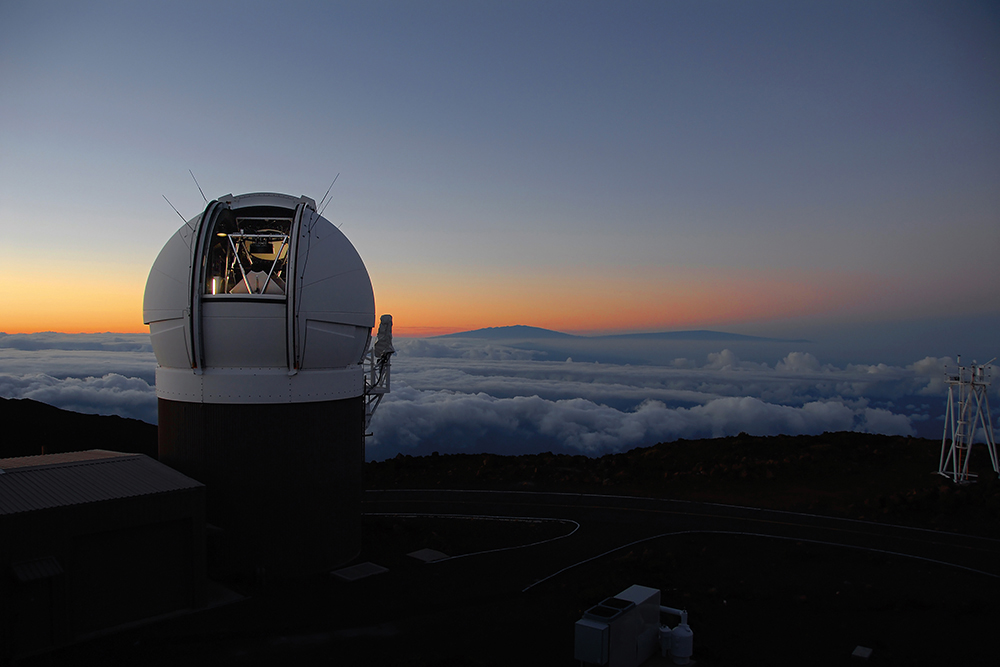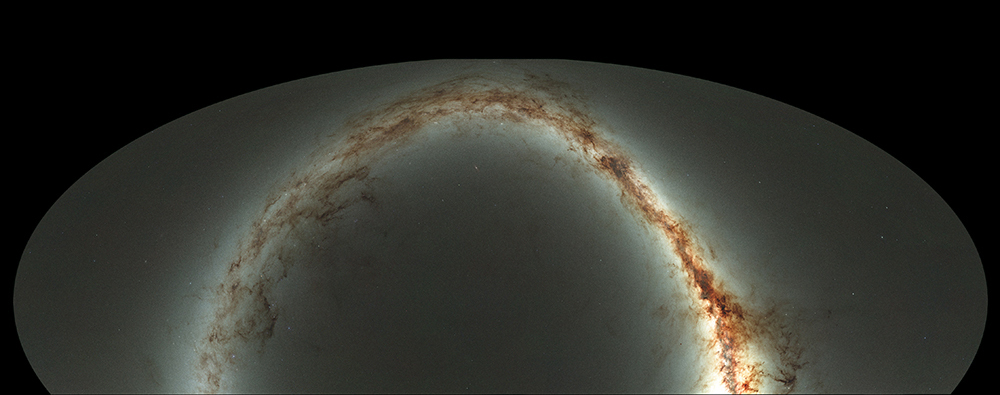Image List
-

The Pan-STARRS1 Observatory on Halealakala, Maui, opens at sunset to begin a night of mapping the sky.
Photo by Rob Ratkowski -

This compressed view of the entire sky visible from Hawai'i by the Pan-STARRS1 Observatory is the result of half a million exposures, each about 45 seconds in length, taken over a period of 4 years. The shape comes from making a map of the celestial sphere, like a map of the Earth, but leaving out the southern quarter. The disk of the Milky Way looks like a yellow arc, and the dust lanes show up as reddish brown filaments. The background is made up of billions of faint stars and galaxies. If printed at full resolution, the image would be 1.5 miles long, and you would have to get close and squint to see the detail.
Danny Farrow, Pan-STARRS1 Science Consortium and Max Planck Institute for Extraterrestial Physics